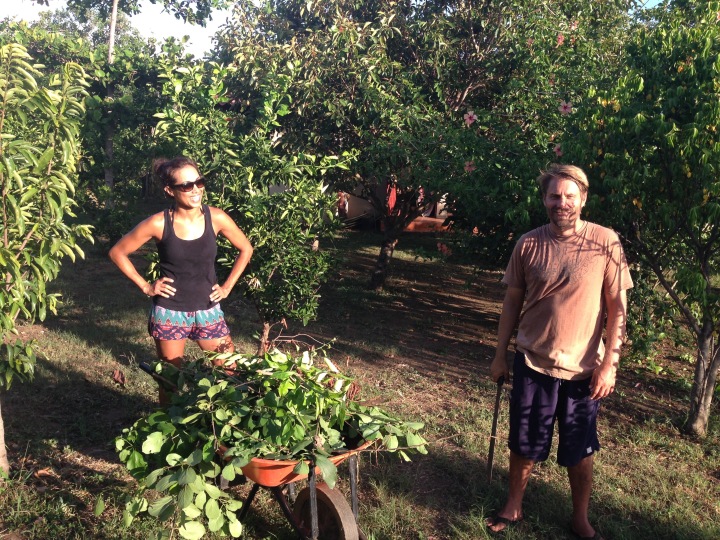
On average, temperatures range from hot to hotter, the rainy season lasts from May to October, chill hours do not exist, and Zone 12 is where it falls on the plant hardiness scale- this means buttery leafy greens and crisp apples are not going to grow well here. And what does grow naturally is not necessarily organic. I’m talking about Nicaragua of course, mainly the municipality of Chinandaga, which encompasses numerous towns and villages near the Pacific coast, just south of the Honduras border.
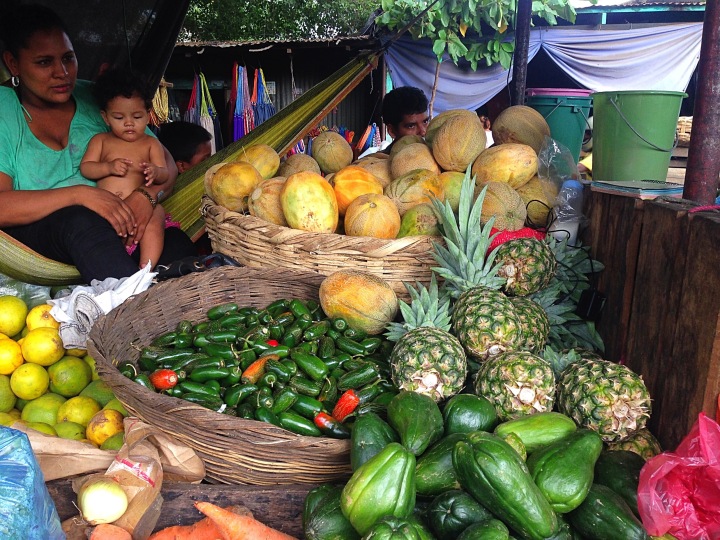
In the heart of the city of Chinandaga, near coastal villages and sleepy marinas, lies hustling Bisne. Spending a day shopping and running errands in Chanandaga is so brutally hot, sweaty, and tiring, that we like to refer to Bisne as the Belly of the Beast. Bisne is a large central marketplace packed with wall to wall, or plastic to plastic, shops along sidewalks, in between catacombs of structural ruins, and street middles where full sized vehicles still seem to squeeze by. Vendors sell everything from broom handles to mattresses, Tosca flip flops to booming stereo speakers, and my favorite, produce. In the sea of random goods, are islands of farmers’ market tables selling local and imported fruits and vegetables. But beware, unlike Santa Monica’s 3rd Street Promenade Farmer’s Market, there are no organically grown advertisements here. Buyers get what they get, hoping for some signs of freshness.
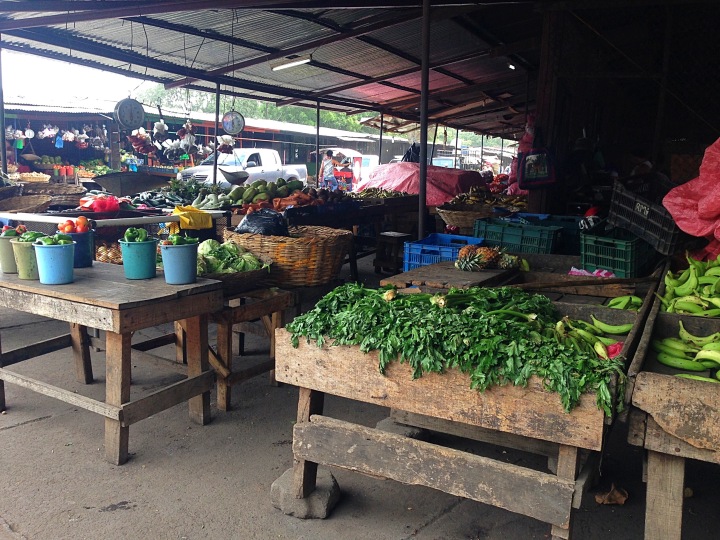
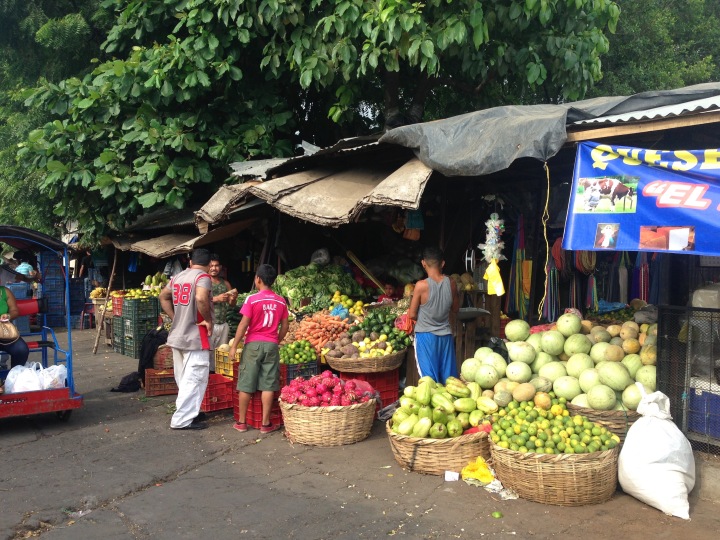
Nicaragua’s tropical variety of locally and organically grown fruits and vegetables are those which grow naturally around residents’ properties or those which gardeners choose to plant using little to none of the commonly distributed, highly toxic pesticides. However, common produce such as nancite, mango, and yuca, are not the only components of a proper diet. The tropical climate here makes it extremely difficult to grow much of the edible produce without the use of cheap and unregulated pesticides. Many of the fruits and vegetables sold in markets, marketplaces, roadsides, and truck beds are abundantly harvested through the help of pest control chemicals, polluted irrigation, and artificial manipulation. With the fairly recent attempt at gaining access to the world’s agricultural export system, as well as feeding its people who have suffered from poverty and absence of proper nutrition, Nicaragua is understandably more concerned with quantity production rather than high quality standards. There’s a lot of catch up work to be done here.
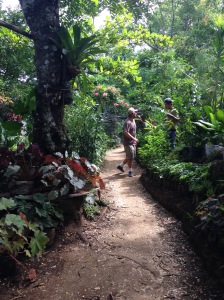
Nicaragua, being one of the poorest Latin American countries, second only to Haiti, has a harsh history of chronic malnutrition and lack of agricultural production for export and population usage. After 1979, the Sandinista regime made an effort to make a country wide farming plan to increase production of cash crops such as coffee, cotton, bananas, and sugar for export in order to bring in revenue. However, by the 1990s, the government made little progress. Even under the leadership changes (and déjà vus) since then, the Ortega administration has not had very much success in creating a national sustainable farming and consistent export industry with the country’s produce and raw materials. Much of the unsuccessful attempts at boosting the farm economy stem from an insecure and unreliable transportation system and severe lack of farming technology and education. Cash crop farms widely use life threatening poisons, outdated agricultural techniques, such as relying mostly on manual labor, and quality standards far below USDA guidelines.
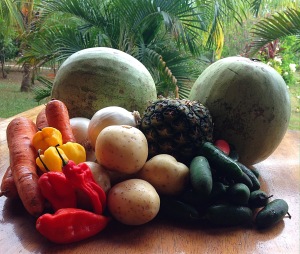
Much of the produce sold in posh supermarkets, that only a handful of the populace can afford the luxury of shopping at, is imported. Many of these fruits and vegetables are full of chemicals in order to uphold the integrity of appearing fresh. Cheap and readily available harmful pesticides are also imported, and these are affordable to most local farmers and landowners. Organic and all natural farming, in general, is difficult and time consuming. Infestations of pests of every kind are common in Nicaragua’s tropical climate, therefore a constant battle exists between farmers and plagues- the people cannot afford to lose these battles and starve, yet sickness from chemicals prevails. Although agricultural progress has been slow overall, there is hope and opportunity to bring in, educate, and implement more advanced, efficient, and less harmful farming technology to towns and villages countrywide. Some universities have launched agricultural studies and groundbreaking techniques in Nicaragua, such as recyclable irrigation and climate-controlled greenhouses. Some surrounding eco-conscious surf camps and resorts have also sprung into action assisting villages in digging irrigation wells and propagating local plants. The help has only made a dent, but planting, however small, the organic seeds of ideology, know how, and health awareness is better than creating lucrative tourism without regard to the wellbeing of the native inhabitants.
Meanwhile, back in Bisne:
Most of the produce we purchase has most likely been tainted with pesticides, the abundant watermelon and carrot harvests lack the sweet homegrown organic flavor, and the celery resembles clusters of dried green wooden sticks. La Colonia Supermarket’s imported celery is juicy, packaged carefully, and costs a pretty penny- so do their crisp shiny white onions and clean light skinned potatoes. Let’s face it- we have the luxury of shopping for chemically ridden produce in either place, buying whatever we choose regardless of cost, and suck it up due to our temporary stay in the country multiple times throughout the year. If we really want to choose to be picky, the only true naturally homegrown and organic produce we can be sure of is what grows on the property at Casa del Sur.
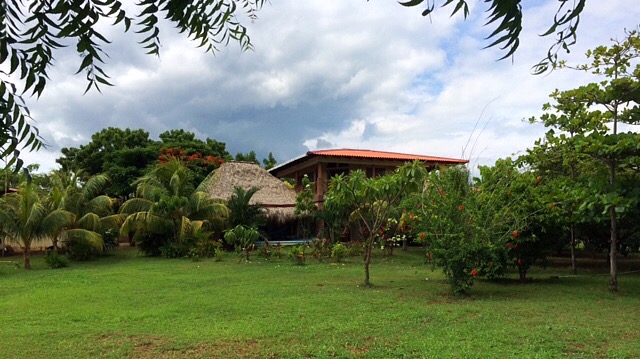
From the top left to right: nancite, pitaya (dragon fruit), guanábana (soursop), carambola (star fruit), coconuts, mangoes, plantains, sour orange, herb and chile pepper garden (habaneros, tobasco, basil, culantro, cinnamon basil, oregano, lemon grass).
Not pictured: Avocados, bananas, mamoncillos, guavas, tropical almonds, papayas, sapotes, mandarins, limes, and oranges.
Back to reality for many Nicaraguans:
Unfortunately, our neighbors in the village do not have the diet supplementation options we do, nor the time and resources to grow organically. In fact, it is easier and far more practical in their mindset to spend time making an income outside of the home, rather than tending garden beds for family consumption. Many of the residents in our village struggle to make a living by fishing, farming in corporate cash crop fields, repairing government funded roads, and working in the numerous “gringo” owned hotels, restaurants, homes, surf camps, and retreats popping up all along the coast. The country has suffered through wars, political upheavals, endless dry periods and heavy rainfalls, famine, disease, gnarly pests, and land exploitation. Organic farming requires patience, diligence, production costs and production only profits. It’s a healthier option, better for the environment, but only on a small scale and is not subsidized by the government, as mass produced, genetically modified, highly pesticide controlled farms are. When almost half of the population is living below the poverty line and the other half is mainly split into poor and lower middle class, profit and successful production of crops seem more practical, even in lieu of harmful chemicals shortening the lives of farm workers and buyers across the land. The cultural climate seems to be that of a society always treading water.
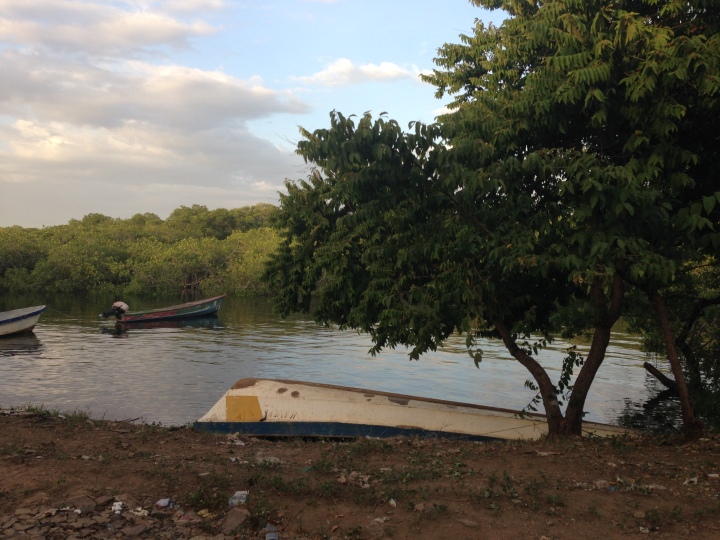
So, what do we do? What can we do? Is there anything we should do?
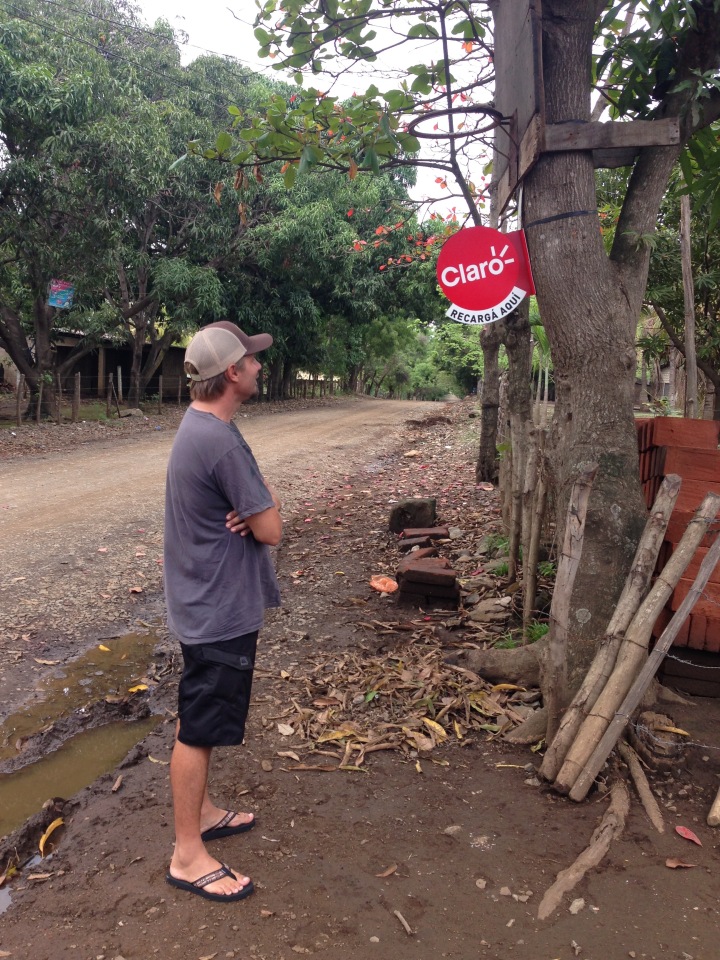
Despite the fact that I recognize the lack of organic farming, and the many other agricultural dilemmas found in Nicaragua, I enjoy the land’s natural beauty and friendly culture. When we’re home in Casa del Sur while the fruits are ripe, we have the luxury of picking from the plants and trees to help quench our hunger and thirst for snacks and smoothies. Making a few Chinandaga runs to complete our diet, although organic-free, is inevitable during our longs stays, and Bisne is often the place we begin our grocery shopping adventures. Once we’ve conquered the heat in the bustling belly, we treat ourselves to an air-conditioned stroll in the La Colonia Supermarket before heading back for sunset Tonas in our balcony hammocks. Swinging gently side to side, overlooking the lush greenery and ocean currents, each sip teeters between refreshing enjoyment and major concern.























What an interesting article on the food dilemma in Nicaragua. Difficult to know what to do. It hasn’t been that long that we have had good access to organic food here, so I can imagine how long it would take in a country like Nicaragua.
LikeLiked by 1 person
How nice to find your blog on living in Nicaragua. We have dear friends in San Juan de Cusmapa, near Somoto and travel yearly to visit. As an avid gardener in the U.S., I can’t help but want to help my friends with growing healthy food, but have come up against all the pitfalls you mentioned. In addition, there is the same trend that the U.S. had 20 years ago to shun anything “different”. I found your blog while searching online to see if I could bring some bacteria enriched commercial potting soil in my baggage. It’s for a friend who is suffering from liver disorders due to all the chemicals used. She wants her own garden to grow some healthy food. I’m really hoping it will work. Thanks!!
LikeLiked by 1 person
I am looking at creating a farm project in Nicaragua, Near Tipitapa. I am looking at getting about 10 Manzanas.
There is a village there that I want to work with. There are a lack of jobs, and the people do not eat well. So I want to help by creating a market gardening project. The food will go to the families that help, and some will be full time workers.
I am also looking at creating a residence for young rural students (from 50 to 80 students) who want to go to University. The fruits and vegetables will also go to them. There may be a lady there who will do the cooking.
I do want to do it organically. I hate chemical anything.
Since this farm project needs to produce a variety of fruits and vegetables, I need to know more about varieties that are good producers, and also the methods of growing, and perhaps starting the plants. Looking at Watermelons, Honeydew melons, Cantelope, tomatoes, hot peppers, sweet peppers, chiltomas, and more (not sure what else is possible) I will be planing some fruit trees: Oranges, Limes, lemons, and more ?? Also some bananas, papaya, etc.
I
I am not even sure when the season for these are best to start.
I am used to northern climate gardens, so this will be a steep learning curve.
Any ideas for this project are welcomed. sources for any necessary tools or such will be welcomed.
I will be needing a truck, tractor and some equipment.
This property that I am looking at is serviced by a stream, so water is not a problem, but I will need some accommodation on site. Electricity is nearby.
I will also look at the possibility of some rice, and beans, quinoa, as well as lentils.
Thanks, Brian form Canada
vikingwarrier@gmail.com
LikeLike